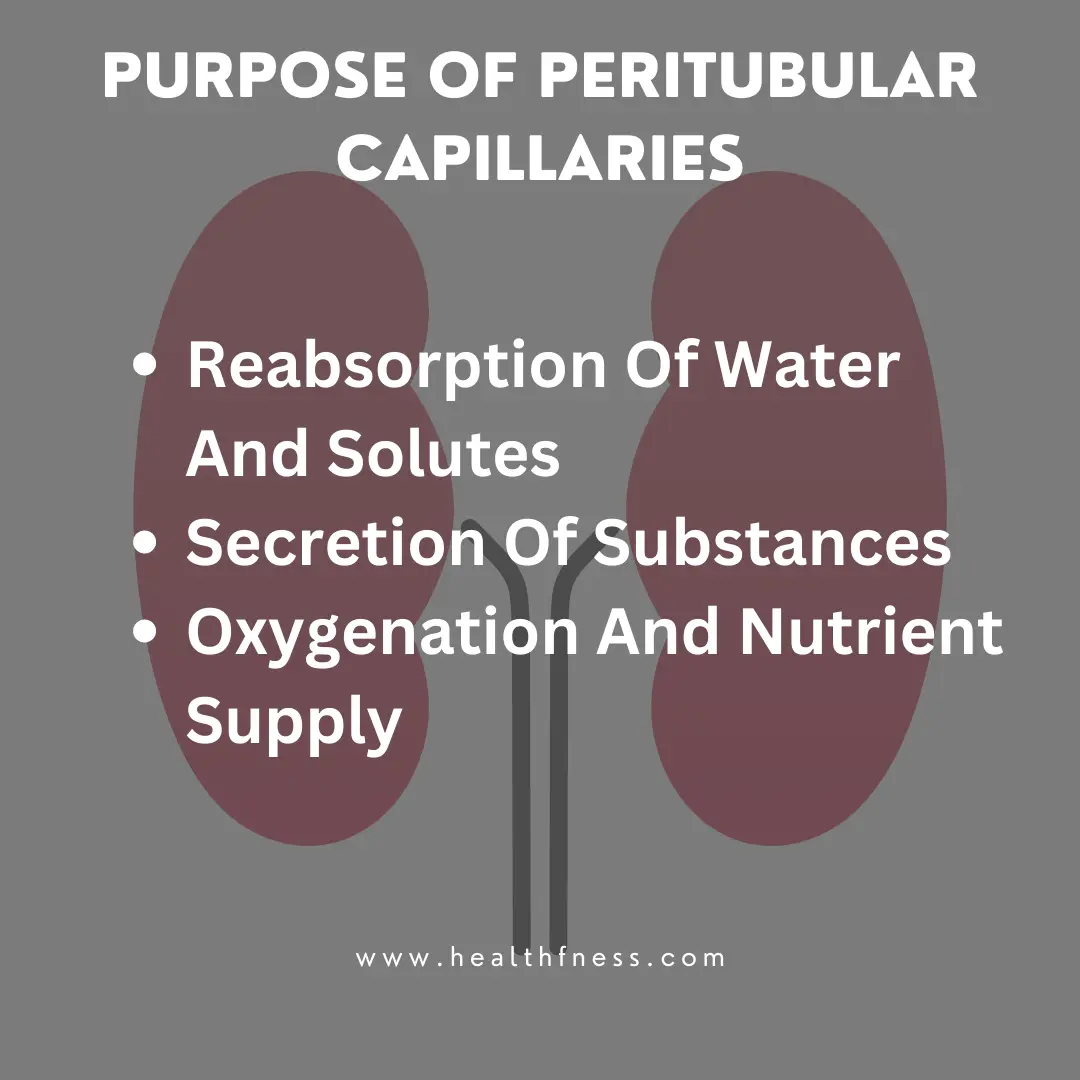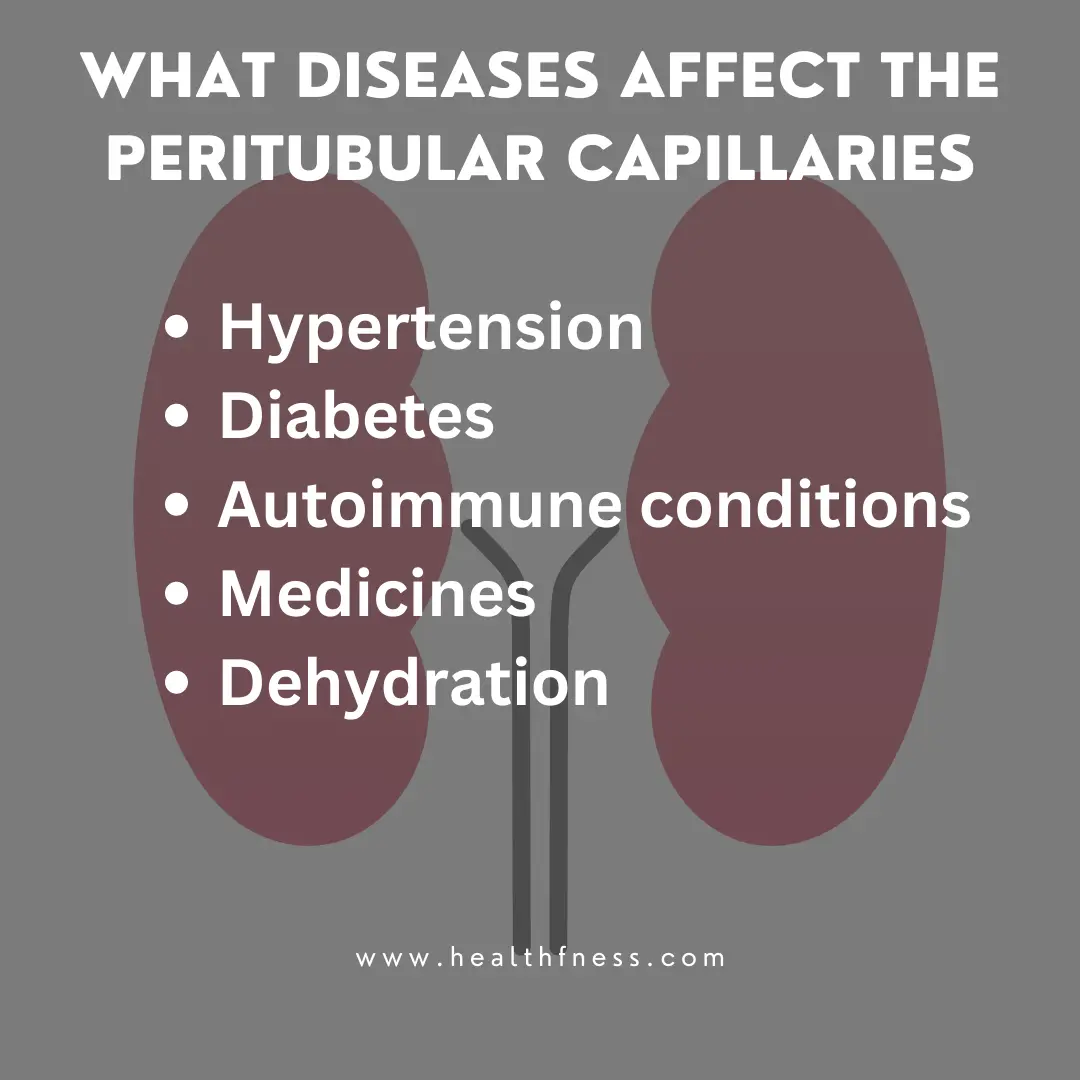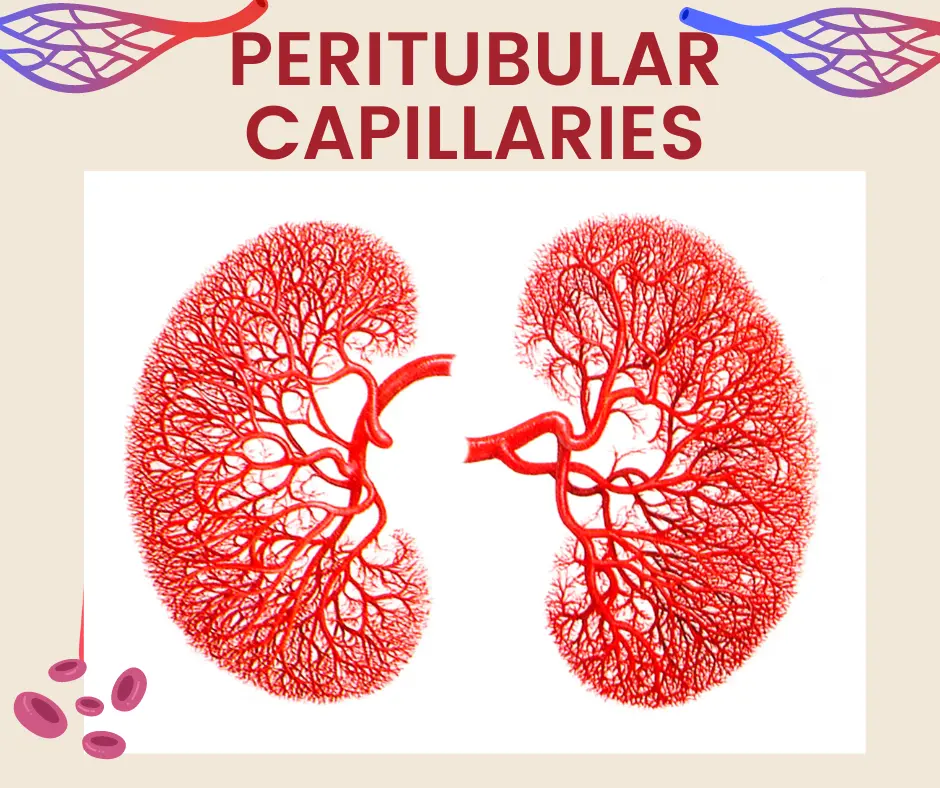The Peritubular capillaries can be described as it is a group of tiny or small blood vessels that surround renal tubes in the kidney. Their duty is to provide substances that need to be released in urine. They also help to absorb nutrients into your body. It also supplies oxygen to kidney tissues which are essential for the proper functioning of the kidney.
Where Can You Find Peritubular Capillaries?
Peritubular capillaries are located within the renal cortex, which is the outer layer of tissue surrounding each kidney. Around one million nephrons can be found in each of your kidneys. Will discuss in detail what is the relationship between Peritubular capillaries and Nephrons.
Anatomy Of Peritubular Capillaries
The anatomy of peritubular capillaries is characterized by their small size it’s too small that a person cannot see peritubular capillaries with the naked eye, thin walls, and close proximity to the renal tubules. They are fenestrated, which means they have tiny pores or openings in their walls that allow for the exchange of materials between the blood and the urine. These pores are surrounded by a layer of cells called podocytes, which help regulate the movement of fluids and solutes across the capillary walls.
You May Also Like To Read: Vitamin D Deficiency ICD 10: Causes, Symptoms, and Treatment
What Are the Purpose Of Peritubular Capillaries
Peritubular capillaries are designed to make it easier for substances that are essential to sustaining the body’s normal fluid and electrolyte balance to be absorbable and secreted. Peritubular capillaries are specifically in control of:
Reabsorption Of Water And Solutes
Water and other solutes that were removed from the blood by the glomerulus are reabsorbed back into the bloodstream as the blood passes through the peritubular capillaries. Maintaining the body’s normal fluid balance depends on this process.

Secretion Of Substances
Peritubular capillaries also secrete or produce substances that need to be eliminated from the body, such as waste products and excess electrolytes. If they remain in the body they will create health issues so it’s very important to remove waste products like urine from the body timely.
Oxygenation And Nutrient Supply
Peritubular capillaries provide the kidney tissue with fresh oxygen and nutrients which the kidney needs like water, antioxidants, vitamins, and minerals which are necessary for healthy kidney function. In a simple way, we can say these capillaries take care of the health of the kidney.
You May Also Like To Read: Best And Worst Foods For Prediabetes 2023
Relationship Of Peritubular Capillaries To The Nephron
Peritubular capillaries are closely related to the nephron, which is the functional unit of the kidney responsible for filtering and processing blood. The nephron consists of several structures, including the renal corpuscle, proximal tubule, loop of Henle, distal tubule, and collecting duct, and peritubular capillaries are intimately associated with these structures.
The efferent arterioles of the glomerulus, a component of the renal corpuscle, give birth to the peritubular capillaries.
Peritubular capillaries cover the proximal, loop of Henle, and distal tubules, allowing for effective material exchange between the blood and urine.
You May Also Like To Read: Iron Deficiency Anemia ICD 10: Unpacking Iron Deficiency Anemia
What Diseases And Circumstances Affect The Peritubular Capillaries?
Several diseases and circumstances can harm the peritubular capillaries, which can cause to disturb kidney function and numerous other health problems in our body one part is connected to several different parts of the kidney not working properly it can also damage the connected body parts. Some of the most common conditions that can affect the peritubular capillaries include:

Hypertension
If a person has High Blood Pressure then there is a chance that it can disturb the function of the peritubular capillaries because the amount of blood flow is decreased toward the kidney eventually kidney will not work in the proper way.
Diabetes
Diabetes can harm the glomerulus and peritubular capillaries, limiting kidney function and resulting in the formation of diabetic nephropathy.
Autoimmune Conditions
Autoimmune conditions like vasculitis and lupus can inflame and damage peritubular capillaries.
Medicines
Certain Medicines, including several antibiotics and nonsteroidal anti-inflammatory drugs (NSAIDs), can harm the peritubular capillaries and reduce kidney function if left untreated can lead to kidney failure.
Dehydration
If you don’t drink enough fluids then dehydration occurs and dehydration can cause decreased blood flow to the kidneys.
You May Also Like To Read: Does Tylenol Affect Blood Sugar?
How Can I Maintain The Health Of My Peritubular Capillaries?
You can reduce the risk of peritubular capillaries damage by incorporating such things into your day-to-day life:
- Drink plenty of water and other fluids for proper flow of blood
- If a person has high blood pressure try to manage it and keep it in a healthy range.
- Exercise on regular basis will help a lot of the body properly function and eventually also benefits the kidneys
- Smoking is very dangerous for all of your body parts try to avoid smoking
- And the important one is always to eat a balanced diet.
Regulation Of Peritubular Capillaries
There are a number of factors that play important roles in the regulation of peritubular capillaries
Hormones
Angiotensin II, aldosterone, and other hormones assist control of blood pressure and sodium levels, which can impact how well the peritubular capillaries work.
Neural Control
The sympathetic nervous system has the ability to narrow the peritubular capillaries, which can impair kidney function by reducing blood flow there.
Autoregulation
The ability of the peritubular capillaries to control their own blood flow is known as autoregulation, and it helps to maintain a steady blood flow and safeguard the kidneys from harm.
Renal Blood Flow
A number of interrelated factors, including hormones, neural control, and autoregulation, interact to control the blood flow to the kidneys.
Future Directions: Emerging Research On Peritubular Capillaries
Research on peritubular capillaries is ongoing, and there are several emerging areas of study one study was conducted by The American Journal of Pathology on the topic of Reduction of Endothelial Glycocalyx on Peritubular Capillaries in Chronic Kidney Disease and this study was published on 23 February.
Another study was published on 17 February 2023 by Wiley Online Library on the topic of Assessment of peritubular capillary rarefaction in kidneys of cats with chronic kidney disease they did an experiment on 58 cats with CKD.
FAQS
What is the difference between glomerular capillaries and peritubular capillaries?
Glomerular capillaries and peritubular capillaries are both types of blood vessels found in the kidneys, but they have some differences in their structure and function.
Where does peritubular capillary arise from?
Peritubular capillaries arise from efferent arterioles, which are small blood vessels that exit the renal corpuscles of the kidney.
Conclusion
Peritubular capillaries are a group of small blood vessels that cannot be seen with the naked eye they have small tiny pores. The purpose of these capillaries is the reabsorption of water secretion of substances and nutrition supply. There is some disease which has a negative impact on the functioning of these capillaries like diabetes and hypertension. And you can maintain the health of the Peritubular capillaries by adopting a healthy lifestyle and avoiding bad habits.
Video Credits:
If you have any confusion or questions related to this topic do Let Us Know😊

